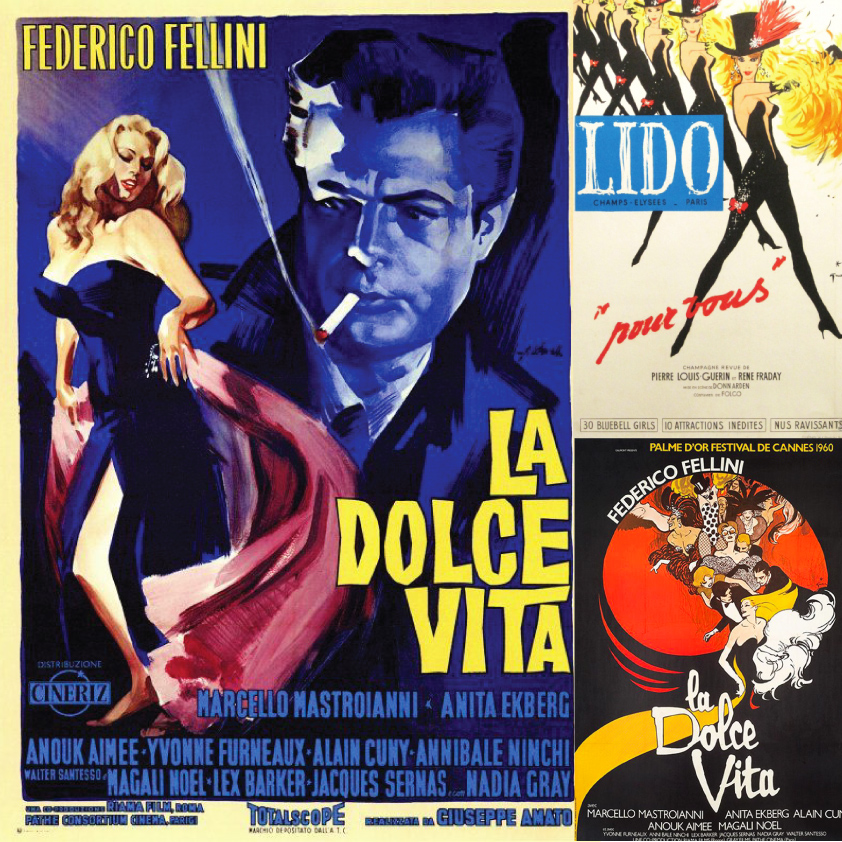When France refurbished its identity after the defeat and deprivation of the second world war, two men were crucial to the re-establishment of the nation as global supplier of luxuries. One was the couturier Christian Dior, the other his chief visualiser, artist René Gruau, who has died aged 95.
Gruau had, in fact, persuaded Dior to accept the sponsorship of textile magnate Marcel Boussac, which made possible the House of Dior and its first, 1947, collection – the New Look, based on Dior’s childhood memories of ultra-feminine women in the belle époque era. Gruau also envisaged for Dior, and later for other designers, the spirit of their creations. Some of his artworks were what we now call “brand images” – the pearl-necklaced swan he dreamed up for Miss Dior perfume after Dior gave him a whiff and a briefing. Others proposed an enviable life of luxe, lovely women happy in chic settings. Although photography displaced art as the medium for communicating fashion, Gruau flourished. No snap ever caught the environment of glamour as did his brush.
He never liked the fine pen lines and delicate watercolours that pervaded illustration from 1910 to 1930, preferring the heavier brushed ink or charcoal outlines and restricted, powerful palette of those pre-1900 Parisian artists, especially Toulouse-Lautrec, who produced arresting calligraphic posters. Not until the 1930s, when Gruau began to sketch for Parisian newspapers and magazines, including Le Figaro and Fémina, did the general graphic mood veer towards his taste, after Carl Erickson introduced a thicker line and oilpaint colour to the glossies. Gruau delineated the clothes of Balmain, Lanvin, Schiaparelli and his favourite, Balenciaga; and befriended Dior, then also an illustrator.
He experimented with ads for Elizabeth Arden and had a brief stint as a stylist in London, but returned to the editorial page in Marie-Claire magazine; with its staff he went into wartime internal exile in the weaving capital of Lyons, in Vichy France; there he met fabric barons who later encouraged him to romance their revived peacetime output in the publication Internation Textiles (he designed its covers from 1946 to 1984).
Gruau settled in Cannes and was in demand in Paris; his inspired projections for Dior continued even after the couturier’s death in 1957 – he limned sexy gentlemen’s limbs for the men’s range Eau Sauvage far into the 1980s. He also helped Givenchy crystallise a younger edition of elegance, which Gruau defined as “desire and knowledge, grace, refinement, perfection and distinction” – also known as Audrey Hepburn

But by the late 1950s, elegance was no longer fashion’s highest aspiration. Gruau was invited to draw for Flair, Vogue and Harper’s Bazaar in New York, but found Americans fixated on movie actresses whose va-va-voom was invisible off screen; he rejected Hollywood invitations to design costumes or posters. Not that he disliked movies – his poster for Fellini’s La Dolce Vita (1959) was extremely influential; much 1960s cinema artwork derives from it. He adored cabaret as a direct link with the Paris of his childish fantasies, created the 1954 poster for Jean Renoir’s film French Cancan and for more than 30 years provided publicity images for the Moulin Rouge and Lido – a whizz of feathers and longer legs in sheerer black stockings than Lautrec had crayonned. He also designed productions for the Les Ballets Roland Petit and the Opéra Comique.
Gruau turned again to advertising and, as the France he recalled evaporated from reality, his work only became more appealing, although he never sold common nostalgia. Even after 80,000 croquis, he was freshly inventive with new formulations for Air France, Cinzano, Martini, champagne labels, Omega watches in 1999 and a Fiat campaign in 2003. He continued to simplify to intensify impact; a recent Aids poster of a riven ace of hearts in his trademark red/black/white combo is so modern it might be by a newcomer.
· René Gruau (Count Renato Zavagli Ricciardelli delle Camminate), graphic artist, born February 4 1909; died March 31 2004. http://www.theguardian.com/news/2004/apr/15/guardianobituaries.veronicahorwell






![Senza-titolo-6-[Recuperato]](https://joujoudelamode.com/wp-content/uploads/2016/03/Senza-titolo-6-Recuperato-1.jpg)


